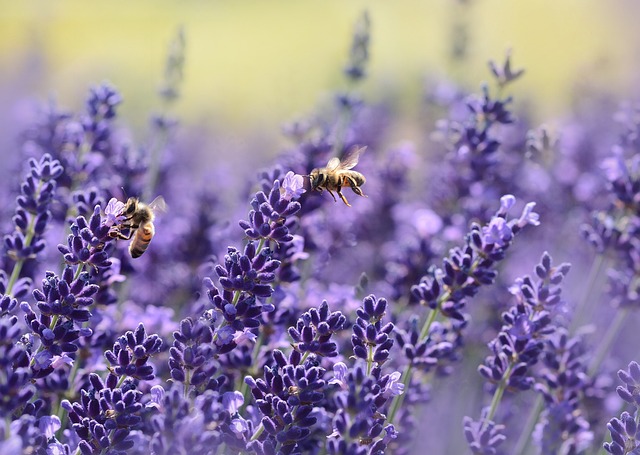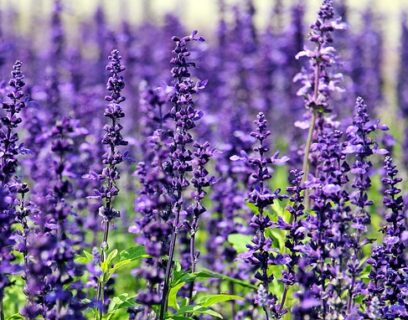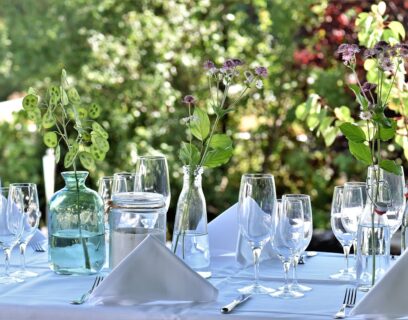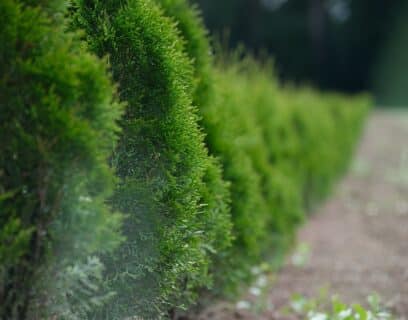Log in or create new account to save this product to your wishlist.
Lavender plants – planting and care guide!
Lavender brings an exotic fragrance and beautiful, abundant flowers to your flower beds and pots. And while lavender is a hardy plant, understanding your variety’s needs is critical to thriving evergreen plants. Find out how to plant and care for your lavender plants.
Latest articles
7 MIN 22 Jul How to keep your lawn in shape this summer 9 MIN 15 Jul Watering Your Garden: 10 Top Tips! 11 MIN 15 Jul Is Your Grass Type Right for your Garden? 11 MIN 10 Sep Create Your Low-Maintenance Garden – Tips and Ideas 11 MIN 08 Sep The Ultimate Guide to Choosing the Perfect Hedges for Your Garden 12 MIN 30 Aug The Top 20 Evergreen Climbers to Transform Your GardenThe lavender plant is a quintessential addition to a UK garden, exuding its heady aroma throughout the summer while attracting friendly pollinating insects, such as butterflies and bees. But if you want a lavender plant, you must take care of it!
- The origins of the lavender plant
- Lavender’s botanical taxonomy
- Different types of lavender at a glance
- When to plant lavender
- Buy lavender plants, seeds, and cuttings
- When does lavender bloom?
- Planting lavender: step-by-step instructions
- Lavender care
- How to overwinter your lavender plant
- Harvesting, drying, and storing lavender
- Lavender in medicine and cosmetics
- FAQs
Typically simple to care for, the lavender plant has some basic essential needs. Find out how to get the most out of your gorgeous lavender and fill your garden with a beautiful, calming scent.
This article explores how to plant a lavender plant and how to make it thrive!
Ready? Let’s go!
The origins of the lavender plant

Lavender originally grew on dry, rocky slopes in the western Mediterranean. Early travellers discovered this heady plant, spreading its popularity quickly across the globe — and by the 16th century, lavender was a stalwart of English gardens.
The name “lavender” comes from the Latin lavere, which means to wash. So, it’s no surprise that lavender’s aroma is commonly found in bathrooms and laundry baskets — found in soaps, perfumes, and air fresheners across the globe.
However, lavender is cultivated for its medicinal properties with the essential oils used in medicines and cosmetics. Used to treat fungal infections, eczema, acne, headaches, exhaustion, and sleeplessness, lavender is an essential addition to a UK garden.
Culinary use of lavender
The lavender plant has a role in the kitchen, used similarly to rosemary in baked breads and meat marinades. It’s also used as a flavouring in conserves and jams, salads, and even tossed into the roasting pan for delightful roast potatoes.
And don’t forget: lavender is also used in mothballs, helping keep insects away from wardrobes!
Lavender’s botanical taxonomy

Lavender belongs to the Lamiaceae family, which includes a range of other aromatic plants, such as thyme, sage, and mint.
Botanists recognise around thirty different types of lavender, but the best know is Lavandula angustifolia — aka “real lavender” or narrow-leaved lavender.
Lavender bushes are evergreen and can grow as large as 2m in height. They have narrow, grey-green leaves and produce purple, intensely-scented flowers that grow like dense ears of corn during the summer.
Lavender’s enduring appeal to wildlife
The distinctive aroma of lavender attracts a range of pollinators, including bumble bees, honey bees, and butterflies.
So, I recommend this plant if you’re looking to populate your garden with beneficial insects — they help your veg patch along like nothing else.
The lavender plant needs:
Lavender is typically robust, preferring dry, stony soils and hot, sunny climates. However, the lavender plant is frost-tolerant, making it an ideal evergreen that comes back year after year.
But don’t forget to prune your lavender bush — find out how in our latest article.
Different types of lavender at a glance
Most of us are familiar with the appearance of the classic lavender plant — but there are several varieties.
Real lavender (Lavendula angustifolia)

This is the most common variety in the UK, with abundant, pungent, purple-blue flowers. And this is the variety most commonly used for essential oils.
- Growth height: 30-60 cm
- Winter hardiness: hardy to -20 °C
- Flowering time: Summer
- Location: Sunny location with well-drained soil, preferably slightly alkaline to neutral soils.
French lavender (Lavendula stoechas)

While it’s most commonly referred to as French lavender, this variety is also known as Spanish lavender or Butterfly lavender.
With dark purple flowers tipped with striking, feathery light purple petals, this distinctive variety offers a strong scent and a long flowering period.
However, Lavendula stoechas is less frost-tolerant than other varieties, so more suited to warmer, southern regions of the UK.
- Growth height: 30-60 cm
- Winter hardiness: Not hardy, usually only partially frost-tolerant
- Flowering period: spring to summer
- Location requirements: Sunny location with well-drained soil, preferably chalky soils
Portuguese lavender (Lavendula latifolia)

While French lavender flowers resemble tiny little pineapples, the Portuguese variety has longer, wider, distinctive upper petals.
The flower buds are tightly packed in a narrow bunch, topped with bluish-violet wide-leaved petals.
The latifolia’s scent is closer to eucalyptus than the typical lavender aroma and is used widely in the cosmetics industry for its fresh, vibrant smell.
- Growth height: 60-100 cm
- Winter hardiness: hardy to -15°C
- Flowering time: Summer
- Location requirements: Sunny location with well-drained soil, also tolerates slightly acidic soils.
Hybrid lavender Lavandin (Lavandula x intermedia)

This distinctive variety is a hybrid of real lavender and Portuguese lavender.
With more delicate, less densely packed flower tips, Lavandin produces an intense fragrance, which remains even when the flower head has dried out. For this reason, Lavandin is popular in dried flower arrangements.
- Growth height: 60–90 cm
- Winter hardiness: hardy to -15 °C
- Flowering time: Summer
- Location requirements: Sunny location, tolerates different types of soil, but prefers well-drained soil.
Woolly lavender (Lavendula Larnata)

So-called for its “hairy” leaves, woolly lavender has narrow leaves and slightly stumpy flower heads, producing gorgeous blue-violet petals.
The leaf hairs help protect the plant from drying out during hot weather, and the flowers produce a beautifully sweet fragrance.
- Growth height: 30-60 cm
- Winter hardiness: hardy to -15 °C
- Flowering time: Summer
- Location requirements: Sunny location with well-drained soil, also tolerates drought.
Lavender Silver Sands (Lavendula x chaytorae)
Another hybrid variety of woolly lavender (crossed with the native Spanish nanata variety), this robust and sturdy plant has gorgeous silvery foliage, which is soft to the touch.
Silver Sands is particularly hardy to drought and frost.
- Growth height: 60–90 cm
- Winter hardiness: hardy to -12 °C
- Flowering time: Summer
- Location requirements: Sunny location with well-drained soil, preferably chalky soil.
When to plant lavender
The right time to plant your lavender bush depends on your local climate and the species you choose.
However, spring is generally the most favourable season. And despite lavender’s typical hardiness, young plants won’t perform well if exposed to the cold.
So, wait until the frost risk has passed before introducing your lavender plant to your flowerbed or patio. This is especially important if your garden is in the shade.
Buy lavender plants, seeds, and cuttings

Most people introduce lavender to their garden as young plants bought from a garden centre. But you can grow lavender plants from seed or even produce a new bush from a cutting.
Follow the instructions when growing from seed.
Growing lavender from a cutting
Take a softwood cutting of around 3-4 inches in length. Choose a section from the mother plant’s newest growth, ideally before flowering.
Ensure the cutting section is free from pests and disease, and remove the lower leaves, revealing at least 3 inches of bare stem.
Dip the cut tip in rooting hormone and plant the covered tips in good-quality compost, watering well. Cover the pot with a transparent bag or a lid, and place it in a warm, shady spot away from direct sunlight.
Keep the soil moist, then remove the cover once the cutting has rooted (it should be around a month). At this stage, the cuttings are ready to be potted up or planted directly in warm soil.
When does lavender bloom?
Most lavender plants bloom in midsummer, although some varieties burst into flower in late spring. Of course, it depends on your garden’s specific ecosystem; shady gardens bloom later than those in full sun.
Expect to see green buds that resemble ears of corn initially. These open up and release petals (and scent) from the bottom of the bud, slowly moving towards the tip as the season progresses.
Planting lavender: step-by-step instructions

Lavender is typically easy to care for and ideal for beginners.
However, for best results, follow these instructions:
- Select the location — most lavender plants prefer full sun and well-draining alkaline soil. They’ll do best if they receive around 6 hours of sunshine daily during the summer.
- Prepare the soil — lavender doesn’t thrive in heavy, wet soil. So, improve the earth with compost and coarse sand or gravel if you have clay soil. Add some horticultural lime if your soil is overly acidic.
- Plant your lavender — dig a large hole to accommodate the entire root ball. Then fill in with good, well-draining soil around the roots, firming the surface to secure the plant in place.
- Keep a distance! — leave between 30 and 90cm between each plant (depending on the species). This gives your new plants enough space to grow, ensuring good air circulation, which helps prevent disease.
- Water — keep the soil moist until the plant is established — at which point, it will become more drought-resistant. Water your freshly planted lavender thoroughly.
Garden doctor Louis says:
You can plant lavender in a pot, but make sure it’s big enough to allow it to grow. Choose a deep pot with a wide opening. Ensure sufficient drainage by spreading clay beads or gravel at the bottom of the pot before filling it with good-quality compost — this is recommended even if your pot has drainage holes.
Lavender care
Remember, lavender originated in warm, dry regions, so established plants will tolerate drought (not that we have many of those in the UK!).
But one of the real draws of lavender is its easy care regime. Nonetheless, pay attention to your plant.
Follow these tips for perfect plants:
Water sparingly
Established lavender plants require occasional watering if we’re hitting a dry spell.
When you water, be generous — but let the top layer of soil dry out before re-watering. Once a week is plenty in warm climates.
However, it won’t tolerate water-logging and cold, wet soil — so ensure good drainage before planting if you have heavy, clay soil.
Avoid watering the leaves of the plant — this can promote fungal diseases. Instead, pour water directly onto the soil around the base of the plant.
Fertilise moderately
Lavender doesn’t need a lot of additional feed — they grow in rocky climes, so they don’t need a deeply nutritious soil.
However, your plant will thrive if you apply a general garden fertiliser in spring.
Pruning
Your lavender plant becomes woody over time and will develop an odd shape if you let it grow wild.
Pruning promotes more compact growth and abundant flowering, so cut your bush back in early spring before new shoots sprout. And remove faded blooms during the summer to encourage a second flowering.
Protect from frost
Most lavenders are relatively frost-tolerant but will suffer if the weather has been freezing for a long time.
So, protect the plant’s roots in winter by mulching around the base of the plant or use a horticultural fleece to keep the soil warm during winter.
Cutting lavender

Pruning is essential for an aesthetically pleasing, abundantly flowering bush. So, cut the stems back by a third of their existing height. Cut above the knot (where the leaf grows out of the branch).
Remove dead or sick-looking branches, and remove overlapping or inwardly growing branches to promote better air circulation around the plant.
How to fertilise your plant
As mentioned, lavender is not particularly nutrient-hungry but will benefit from an annual feed.
Avoid nitrogen-rich fertilisers, as these promote leaf growth at the expense of flowers. This means you shouldn’t fertiliser your lavender plants with used coffee grounds.
An excellent alternative to commercial fertiliser is homemade compost. So, add a layer of well-rotted compost around the plant’s base, and the nutrients will sink into the soil after watering.
Too much fertiliser is harmful to a lavender plant — it will lead to foliage overgrowth and poor flower head production, which the plant relies upon for reproduction.
Pests and diseases
Lavender is tough — but it’s not indestructible. Look for signs of pests or disease.
Aphids
Aphids are tiny insects that suck moisture from domestic and garden plants. Your lavender plant could fall foul of an aphid, spider mite, or thrip attack, so look for signs of dry, yellowing leaves.
Attack aphids with insecticidal soaps or horticultural oils. Find out how to attack pests in our expert guide to tackling aphids.
Root rot
This is a serious disease caused by excessive water or poor drainage. You’ll recognise root rot by wilting, yellow leaves and a general decline in the plant’s vitality.
In this case, lift the plant from the soil and trim the affected roots. Fill the planting hole with fresh topsoil mixed with mulch and well-rotted compost to help improve drainage. Then, replant. Alternatively, move the plant to a more suitable location, shaded from excessive rain or heavy, compacted soil.
How to overwinter your lavender plant
While most lavender varieties are frost-resistant, offering protection from the harshest winter elements is a good idea.
The average temperature for a UK winter is between 2ºC and 7ºC, but it does drop to just under 0ºC. Most lavender plants will cope with these lows, but if we’re experiencing a very long, cold, and wet winter, it’s a good idea to afford your lavender plant a little TLC.
Mulching
Apply a mulch layer around the plant’s base to help protect the plant’s roots from frost.
Use organic substances, such as straw, compost, leaf mould, wood chips, or even foliage.
Alternatively, a horticultural fleece or layer of old carpet is effective against frost. Remove this covering once the weather improves to avoid overheating and excessively wet soil.
Potted lavender care
Lavender plants do excellently in pots, which makes them great for textural and aromatic interest on your patios and decking areas. However, potted soil freezes more quickly than the earth in your flowerbeds.
So, bring your potted lavender indoors over the winter to protect it from frost. Place it in a cool, bright place, and water it sparingly!
Be species aware
Some lavender varieties are more frost-resistant than others. So, if you live in an area that enjoys harsh winters, opt for more frost-resistant species, such as lavender angustifolia (real lavender).
Harvesting, drying, and storing lavender

The lavender plant’s fragrance, flavour, and medicinal properties make it a popular choice in the home and garden.
The optimal time to harvest lavender is just before the flowers have opened entirely— when the fragrance is at its strongest. Tie the stems together in bunches, hanging them in a warm, dry, dark place to dry.
Once the lavender has completely dried out, pluck the flowers from the stems. Then, store them in an airtight container for later use.
You can use dried lavender for:
- Lavender tea
- Baths
- Pot pour ribs
- Soaps
- Essential oils
Lavender in medicine and cosmetics
Aromatherapists often use lavender for relaxation and stress relief. However, lavender oil has antibacterial and anti-inflammatory properties, making it suitable for treating ailments such as muscle sprains, stiff joints and soothing skin cuts and grazes.

Garden doctor Louis says:
Add a few lavender flowers to a bowl of sugar. Mix well, and leave to infuse for a couple of weeks. Then, use your delicious lavender sugar to sweeten sour berries, cookies, or even your cup of tea!
FAQs
The best time to prune lavender is in the spring after new shoots have sprouted but before the buds have flowered. You can cut faded flowers back in midsummer to encourage a second flowering.
Lavender is an evergreen plant that typically blooms during the summer, between June and August. However, flowering time varies depending on your plant’s location and variety.
The optimal planting window for a lavender plant is in spring after the frost risk has passed. Ideally, plant the new bush between April and May, giving it plenty of time to establish before winter.
Ready to get started?
I hope I’ve answered all your burning questions about planting and caring for your lavender plant, but if you have any questions, don’t hesitate to get in touch.
Alternatively, leave a message in the comments below, and we’ll get back to you as soon as possible.
And remember, our comprehensive Help & Advice section is a wealth of gardening and lawn care expertise!
Thanks for reading!
Leave a comment
Your answer will be displayed on the site and the interested party will be notified by email.
Leave a comment
Have a question or want to share your experience? Leave us a comment.
Read more
The best tips and tricks for a lush green lawn
 7 MIN
13 Sep
Lavender Cuttings: a step-by-step guide
7 MIN
13 Sep
Lavender Cuttings: a step-by-step guide
 11 MIN
10 Sep
Create Your Low-Maintenance Garden – Tips and Ideas
11 MIN
10 Sep
Create Your Low-Maintenance Garden – Tips and Ideas
 Scarifying Kit
All products after scarifying | Quickly restores the lawn after scarifying | Outsmart weeds quickly with the use of this kit
From: € 39.99
Scarifying Kit
All products after scarifying | Quickly restores the lawn after scarifying | Outsmart weeds quickly with the use of this kit
From: € 39.99
 Spring Lawn Care Kit
MOOWY’s choice for the spring | Quick recovery of your lawn after winter | A strong lawn prevents weeds
From: € 25.99
Spring Lawn Care Kit
MOOWY’s choice for the spring | Quick recovery of your lawn after winter | A strong lawn prevents weeds
From: € 25.99
 Long Lasting Lawn Fertiliser
Effective for 90 days | See results in 14 days! | Suitable for all types of grass and soil
From: € 13.99
Long Lasting Lawn Fertiliser
Effective for 90 days | See results in 14 days! | Suitable for all types of grass and soil
From: € 13.99
Do you want a lawn calendar?
🌱 All important maintenance moments for your lawn during the year. Leave your email and we will send you the lawn calendar for free.
Enter your email
Receive the lawn calendar in the mail
Enjoy a green lawn all year round!











Comments (0)
There are no comments yet. Well then, what are you waiting for to
Be the first to write your comment!inaugurate this pretty page?
Do you have some comments?